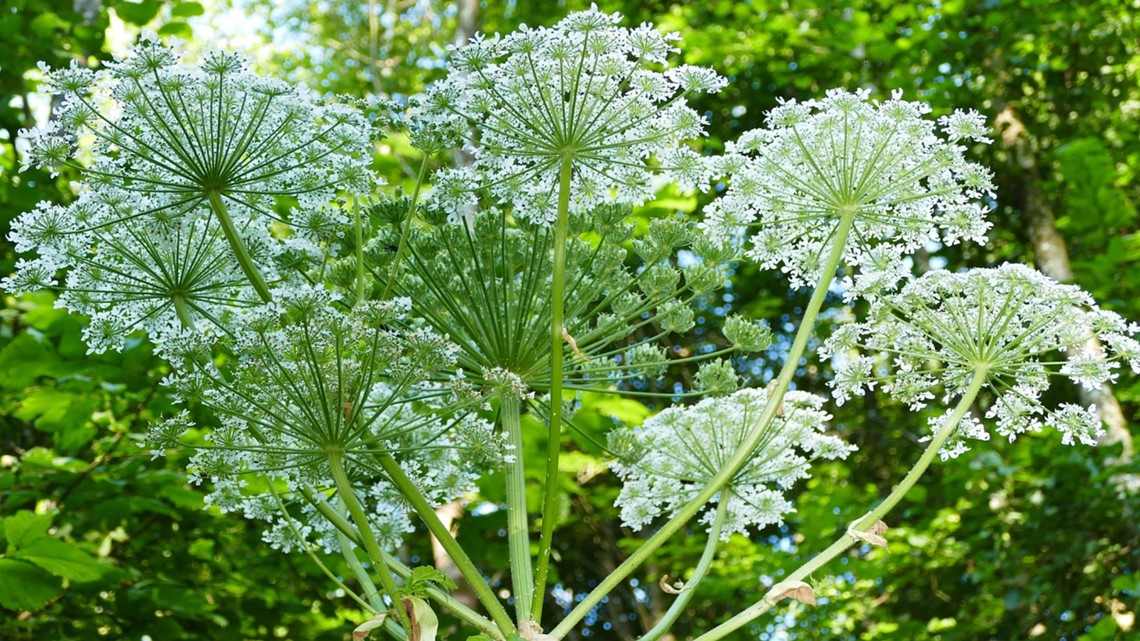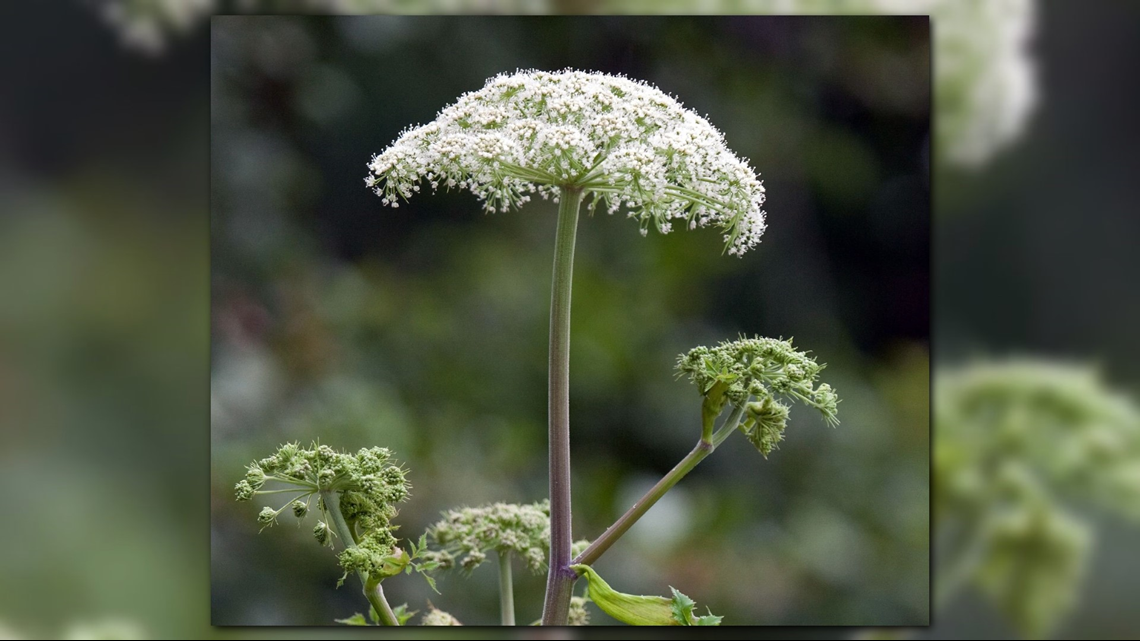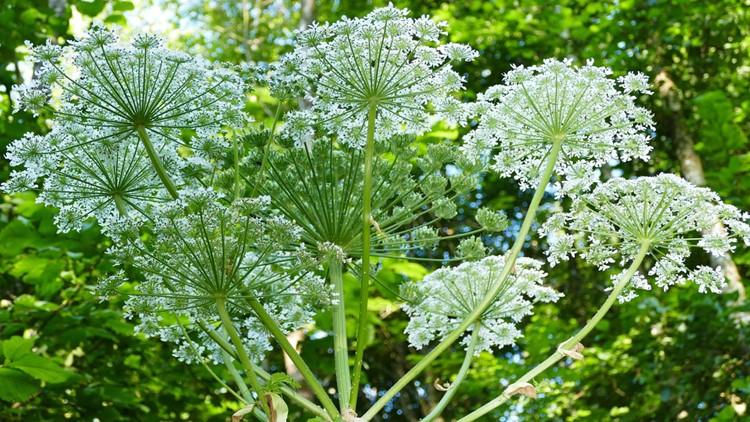NEW YORK — In nature, it's often better to look and not touch. And when it comes to one particular flower that can inspire awe with its great height, there is no better warning.
The giant hogweed is a massive, invasive plant across the U.S. and U.K. that is as harmful as it is attractive. Its sap can cause human skin to burn, blister and even scar, and New York officials have made their stance extremely clear on how people should interact with it: "Do not touch this plant!"
"Brushing against or breaking the plant releases sap that, combined with sunlight and moisture, can cause a severe burn within 24 to 48 hours," New York's Department of Environmental Conservation says on its website.


The plant is often confused with cow parsnip, but unlike the native species, it has white flowers with anywhere between 50 to 150 flowers in umbrella-shaped clusters that can span up to 2 1/2 feet across. They can also grow to be between 7 and 14 feet tall.
London has seen a renewed call for caution over the plant after one man's recent encounter with the plant. Daniel Logan told BBC News that he may now have scars for the rest of his life after he came across giant hogweed in West London's Boston Manor Park.
"It's been terrible, to be honest," the 21-year-old said, adding that he's "lucky ... it's only my ankle."
"If a little kid falls in there, gets it on their face or something, that's going to cause them life-changing injuries," he told BBC News. "If I had seen some signs I wouldn't have gone down into the bush. I've only gone in to get the ball for my brother but if I was made aware what it was and what it could do to you, I definitely wouldn't have gone in there."


What happens if you touch giant hogweed?
Photos shared with BBC News show Logan's angle significantly swollen with a red rash and massive blisters. That's caused by the plant's sap, according to the Royal Horticultural Society, which says it "poses a serious risk to people who are unaware of its potential for harm."
It was so painful for Logan, that at one point after his blisters developed, he "couldn't even walk," he told the Evening Standard.
Along with blisters, burns, rashes and scarring, one 2009 study found that if the plant's sap gets into your eyes, it can "cause temporary or possibly permanent blindness."
"Sap is considered most toxic when the plant is in flower," the study says. "If skin contacts giant hogweed, exposed areas should be sheltered from sunlight and washed with cold water."
Canada's Invasive Species Centre says that the toxins in the sap become more problematic the longer it's on the skin and in the sun.
"Ultraviolet radiation activates compounds in the sap, resulting in severe burns when exposed to the sun," the Centre says. "... Purplish scars may form that can last for many years."
Is giant hogweed toxic to animals?
The ASPCA has warned that the plant can be toxic to pets just as it is for humans. Dogs, cats and even horses are all at risk of feeling its effects, the organization says, and will likely experience the same kinds of injuries as humans if they are exposed to the sap.
Pet service company Wag has also warned that an animal could develop a disorder called phytophotodermatitis, a skin reaction that humans can also experience from the plant, as well as from something known as margarita burn. The reaction happens when the skin is exposed to compounds called furanocoumarins, making it more sensitive to the sun's rays.
Where did giant hogweed come from?
Giant hogweed is an invasive species in the U.S. and U.K. that originated from southern Russia and Georgia. According to the New York Department of Environmental Conservation, it specifically originated in the Caucasus Mountain region and was introduced to the U.K. in the late 19th century and the U.S. in the early 20th century.
Where is it found?
The plant is found throughout the U.K., and in the U.S., the toxic plant is commonly found in New England, the mid-Atlantic and the Northwest, most often growing along streams, rivers, fields, forests and roads.
"It prefers open sites with abundant light and moist soil," New York officials say, "but it can grow in partially shaded habitats, too."


